Margaretha Zelle, aka Mata Hari
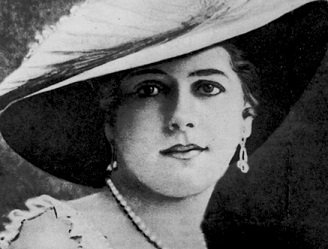 The woman who would become famous as Mata Hari, the “Eye of the Dawn”, was born in 1876 as Margaretha Geertruida Zelle. Her parents, Adam and Antje, were middle-class but prosperous Dutch people, living in Leeuwarden. Her father had a hat business, and this along with his investments were successful enough for him to afford a top-class schooling for the only girl among his five children. She learned French, German and English, among other subjects. It was an idyllic childhood, and she was spoiled to an extent by her indulgent parents. Unfortunately in 1889, when she was thirteen years old, her father’s business and investments came apart and he became bankrupt. The financial pressures destroyed Adam and Antje’s marriage, and they separated. Young Margreet (as she was known) went with her mother, but nine months later her mother sickened and died. Her father had no recourse but to send the children out for fostering.
The woman who would become famous as Mata Hari, the “Eye of the Dawn”, was born in 1876 as Margaretha Geertruida Zelle. Her parents, Adam and Antje, were middle-class but prosperous Dutch people, living in Leeuwarden. Her father had a hat business, and this along with his investments were successful enough for him to afford a top-class schooling for the only girl among his five children. She learned French, German and English, among other subjects. It was an idyllic childhood, and she was spoiled to an extent by her indulgent parents. Unfortunately in 1889, when she was thirteen years old, her father’s business and investments came apart and he became bankrupt. The financial pressures destroyed Adam and Antje’s marriage, and they separated. Young Margreet (as she was known) went with her mother, but nine months later her mother sickened and died. Her father had no recourse but to send the children out for fostering.
Margreet was sent to stay with her godfather, a man named Visser. He had no children of his own, and little real wish to support a feisty teenager, so he decided to send her to a kindergarten training college where she could live and learn a profession. Here the young Margreet proved decidedly popular – especially, as it turned out, with the headmaster. Though she claimed later that the relationship never passed beyond the hand holding stage, her godfather was forced to remove her from the school. With the cloud of scandal hanging over her head, and at 17 now expected by her godfather to provide for herself, Margreet was left with few options beside marriage. At the time it was common for army officers home on leave to advertise that they wished to meet young women with a view to marriage, and Margreet answered one such advertisement.

The man who had placed the ad was Captain Rudolf John MacLeod, an officer in the Dutch Territorial Army of Scottish descent. Rudolf was normally stationed in Indonesia, then known as the Dutch East Indies, and had decided to seek a bride. Margreet had included a photograph in her letter, and her tall dark-haired beauty clearly captured his interest. Rudolf was about twice her age, from the upper classes, attractive and well-decorated though (unbeknownst to her) also a heavy drinker and ferociously lecherous. Still, the two met and liked each other very well, and after only three and a half months of courtship they were married. Some have speculated that this haste was because Margreet was pregnant, though if so it was either a false alarm or miscarried as it would be two years before their first child was born.
Right from the start, Rudolf was unfaithful to Margreet. One friend later told the story of being asked to keep the officer’s wife company one evening because he expected to be home late as he was visiting a brothel, less than three weeks after they had exchanged vows. Things got worse after the family moved back to the East Indies. Margreet herself told the story of how when the couple’s second child, a daughter named Louise Jeanne, was born she could hear the sounds of Rudolf having sex with a native girl in the next room. Between this and Rudolf’s violent jealousy of any attention paid to his pretty young wife by other men, married life for Margreet was far from happy. Things did improve though, as Rudolf was transferred to Medan and left his family behind temporarily. Suddenly Margreet was left with a great deal more freedom.

Some sources say that Margreet began openly living with an officer named Van Rheedes, the chief accountant for the Dutch army in the colony, but this seems somewhat unlikely given that she remained accepted in popular society. More likely is another account, which was that Margreet and the children moved in with Van Rheedes and his wife for the company. Margreet was able to have more of a social life now she was out from her husband’s jealous eye, and she soon developed a fascination with the local Javanese culture. She wore native dress, and even learned some of the native dances, which she would practise alone in her room. She is reported to have read translations of the Ratirahasya and the Kama Sutra, opening a new world of sensuality to her. [1] In her letters home, she spoke of having adopted a native name for herself, a popular phrase used to describe the sun – Mata Hari, the Eye of the Dawn.
This period of freedom proved to be brief, however, and soon Rudolf sent for the family to come and join him in Medan. Here matters went from bad to worse, as Rudolf had begun to drink more heavily and started beating Margreet for attracting the attention of men (whether real or imagined). In response, she withdrew even more into her interest in native lore, which irritated him further. Catastrophe struck when the two children fell ill, and Norman John died. Poison was suspected, as Rudolf was known to be brutal towards the native soldiers, but nothing was ever proven. [2] In 1900 Rudolf was forced to retire on medical grounds, and the two moved to a small Indonesian village in order to make the most of his pension. Margreet hated it, and eventually persuaded him to move back to Holland in 1902. There the strain finally proved too much, and their marriage ended.
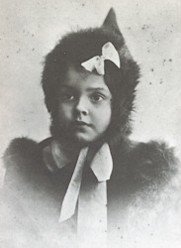
The exact circumstances of their seperation and divorce were disputed between the two. Margreet claimed that she came home one day to find that Rudolf had absconded with Non. [3] Rudolf claimed that Margreet deserted them, and took out advertisements asking people not to do business with her. Eventually the two were legally divorced and Margreet won custody of her daughter, though she was unable to support the two of them and had to give her back to Rudolf. It was, she later said, her single greatest regret. With her heart broken, Margreet decided to leave home behind and head to the cultural capital of Europe, Paris.
In Paris Margreet soon found employment as an artist’s model and, in her first show business appearance, as a circus horse rider. Initially she adopted the name of Lady MacLeod but protests from Rudolf’s relatives led her to change to her adopted Indonesian name of Mata Hari when she decided to try professional dancing. To tie in with this name change she adopted a costume based to some extent on the Javanese dancing girls she remembered, though it owed more to expediency and available materials than anything else. Her dark complexion and unconventional attractiveness lent her an exotic air, and her vaguely remembered East Indian dances were unlike anything known to the Parisians. She made her debut in a private dance at Madame Kireevsky’s salon on the Avenue Marceau, and was a hit. One of those attending was Émile Étienne Guimet, a wealthy manufacturer who had travelled extensively in the Orient. He recognised the authenticity at the core of Margreet’s dancing, and invited her to perform at the musuem he had founded, the Musee Guimet. It was this show, where Margreet fused her knowledge of Javanese dancing with a complete lack of inhibitions regarding nudity, that Mata Hari truly came into existence. [4]

Novelty, as always, was a huge draw, but it was Mata Hari’s exuberance and lack of inhibition that was truly refreshing. Her pose was as a sacred dancer, raised since birth to dance in honour of the gods, and though it was well known that this was an act, her alter ego as “Lady MacLeod” and early education in upper-class etiquette sufficed to give her acceptance at the highest level. She became Guimet’s mistress, and through him met Gabriel Astruc, who was one of the most influential booking agents in Paris and who would manage her appearances throughout her career. He booked her first major public appearance at the Paris Olympia in August 1905, as a star attraction. Her payment was 10,000 francs – around £30,000 in today’s money. The press loved her, and one critic wrote:
Mata Hari personifies all the poetry of India, its mysticism, its voluptuousness, its languor, its hypnotizing charm. To see Mata Hari in a rhythm and with attitudes that are poems of wild voluptuous grace is an unforgettable spectacle.
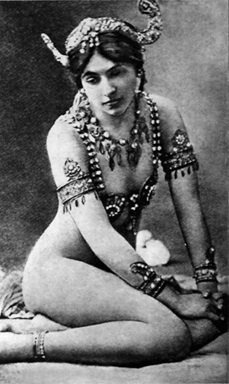
From there she went on tour around Europe, including an appearance in Monte Carlo where the composer Puccini was in the audience, and was rumoured to have had an intimate encounter with her backstage. Mata Hari’s promiscuity, far from being a liability, became part of her appeal – she was foreign, after all, and beyond the local morality. The story went that one German policeman who was sent to investigate her on charges of indecency wound up seduced by her. She took her lovers mainly in Paris and in Germany, a combination which would later prove disastrous, and wound up staying in West Berlin as the mistress of a German cavalry officer named Alfred Kiepert. When Kiepert was finally persuaded by his family to pay her off, she returned to Paris, but her absence had left the market open for a host of imitators, most younger and more skilled than her. By 1910 her career was in definite decline, and she made her last public appearance in 1913. In the great French tradition of the demi-mondaine, she transitioned from a dancer with wealthy admirers into a courtesan who lived off those admirers, and there were plenty of them. The one downside of this lifestyle was that it meant that her husband was able to completely deny her any access to her daughter, as the Dutch courts agreed that such an infamous creature would be nothing but a corrupting influence. Still it was a good life for her, up until Gavrilo Princip put a bullet into Archduke Franz Ferdinand and ruined everything for everyone. [5]
As a Dutch citizen (and thus neutral), Margreet was able to travel freely between France and Germany, a privilege she somewhat foolishly indulged in during the first few years of the war. In truth, she seems to have failed to take the whole thing seriously, though the shift in French moral values it brought about left her a much less popular figure than she had been. Interest in the exotic was replaced with distrust of the foreign, and enjoyment of the transgressive became replaced by enforcement of the norms. In 1915 she became drawn into the murky world of espionage, though she was a far cry from the masterful seductress she would later be painted as. In fact, for a long time her actual activities were virtually unknown. Papers released as their secrecy expired have helped to clarify things, but what follows remains largely a matter of supposition than certainty. It seems that she was originally recruited by the German consular services in Holland, and paid to gather general intelligence in France. She travelled to Paris, where she was mostly involved in winding up her affairs and disposing of her assets, as she no longer felt welcome there. She did however send her German paymasters one letter, consisting of the rumours she had heard about a coming offensive. This persuaded them of her loyalty, and when she returned to Holland the Germans decided to offer her further work, and even took her to Frankfurt for formal training. There she failed to impress, but she still returned to Paris where she worked as a prostitute, ferreting out rumours from her clients who were mostly Army officers. It was at this point that she made the mistake of falling in love.
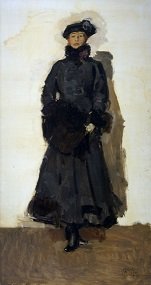
Margreet’s lover was Vadim Masloff, a much younger Russian officer. The two planned to marry, and the relationship ended Margreet’s willingness to continue working for the Germans. Unfortunately for her, however, her activities so far had roused the suspicions of British and French counter-espionage agents, and she was already on a watch list. So when Masloff was injured in the war zone and Margreet sought a pass to visit him, she was told that the price would be to become a spy against the Germans. The head of French counter-intelligence, Georges Ladoux, [6] would later say that this was a deliberate ploy to entrap her, though the circumstances suggest it was more likely a genuine attempt to “turn” her. Margreet tried to set off for Belgium to spy on the Germans there, but the British (unaware of Ladoux’s plans) detained her and prevented her from passing through, and she was eventually deported to Spain. There her attempts to spy on the Germans only succeeded in convincing them she could no longer be trusted, and they deliberately leaked information to the French that suggested she was still an active spy. When she returned to Paris in January 1917 to collect her pass, she was instead arrested and imprisoned.
Margreet was held in prison for over six months before her trial, and few who had been her friends in the “good old days” were willing to speak on her behalf. Three years of bloody warfare had left no place for sympathy in people’s hearts, and the papers instead gloried in painting her as a great spy and seductive monster, creating the legend that still surrounds her to this day. The army had attempted mutiny only a few months before, and the propaganda value of capturing a spy the government (rather ludicrously) blamed for the deaths of 50,000 French soldiers was immense. When the trial began it was clear that no verdict except guilty would be permitted, despite the lack of any clear evidence to convict her. On the 25th July 1917 she was convicted and sentenced to death.
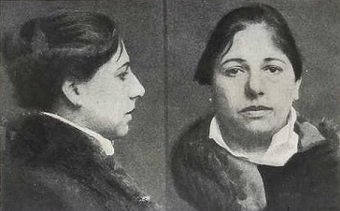
Margreet remained in prison for three months, as her case was appealed. The Dutch government even formally asked for a pardon, but there was no way the French government could relent. Mata Hari had become a symbol of internal corruption, and her death had become necessary to the regime. On October 15 she wrote two letters in her cell, then was escorted to the execution ground. A British reporter who was there later wrote that she was not bound and refused a blindfold, but instead stood and faced the riflemen of the firing squad without fear. They raised their rifles and a fusillade of shots rang out.
At the report Mata Hari fell. She did not die as actors and moving picture stars would have us believe that people die when they are shot. She did not throw up her hands nor did she plunge straight forward or straight back.
Instead she seemed to collapse. Slowly, inertly, she settled to her knees, her head up always, and without the slightest change of expression on her face. For the fraction of a second it seemed she tottered there, on her knees, gazing directly at those who had taken her life. Then she fell backward, bending at the waist, with her legs doubled up beneath her. She lay prone, motionless, with her face turned towards the sky.
So ended the tumultuous life of Margaretha Zelle.
Images via Wikimedia except where noted.
[1] Though the Kama Sutra (and the less well-known Ratirahasya) are generally thought of as solely sex manuals, they were in fact full guides to maintaining a healthy marriage, including advice on deportment and communication, with sex a single facet of that relationship. This makes them an invaluable guide to the cultural mores of their time.
[2] Some biographers suspect that the children suffered a bad reaction to treatment for congenital syphilis contracted from their father and mother, but there seems to be little evidence for this.
[3] The family nickname for Louise Jeanne, taken from the Indonesian word for little girl, nonah.
[4] She wore a flesh-coloured bodystocking for most of her performances, but they were still very risque for the time.
[5] Yes, I know this is a pretty reductive version of the causes of World War One, but it was the precipitating incident.
[6] Later arrested on the charge of being a double agent himself, though he was exonerated at trial.
